Retro Pug – A New Breed of With a Long Snout & Vintage Charm
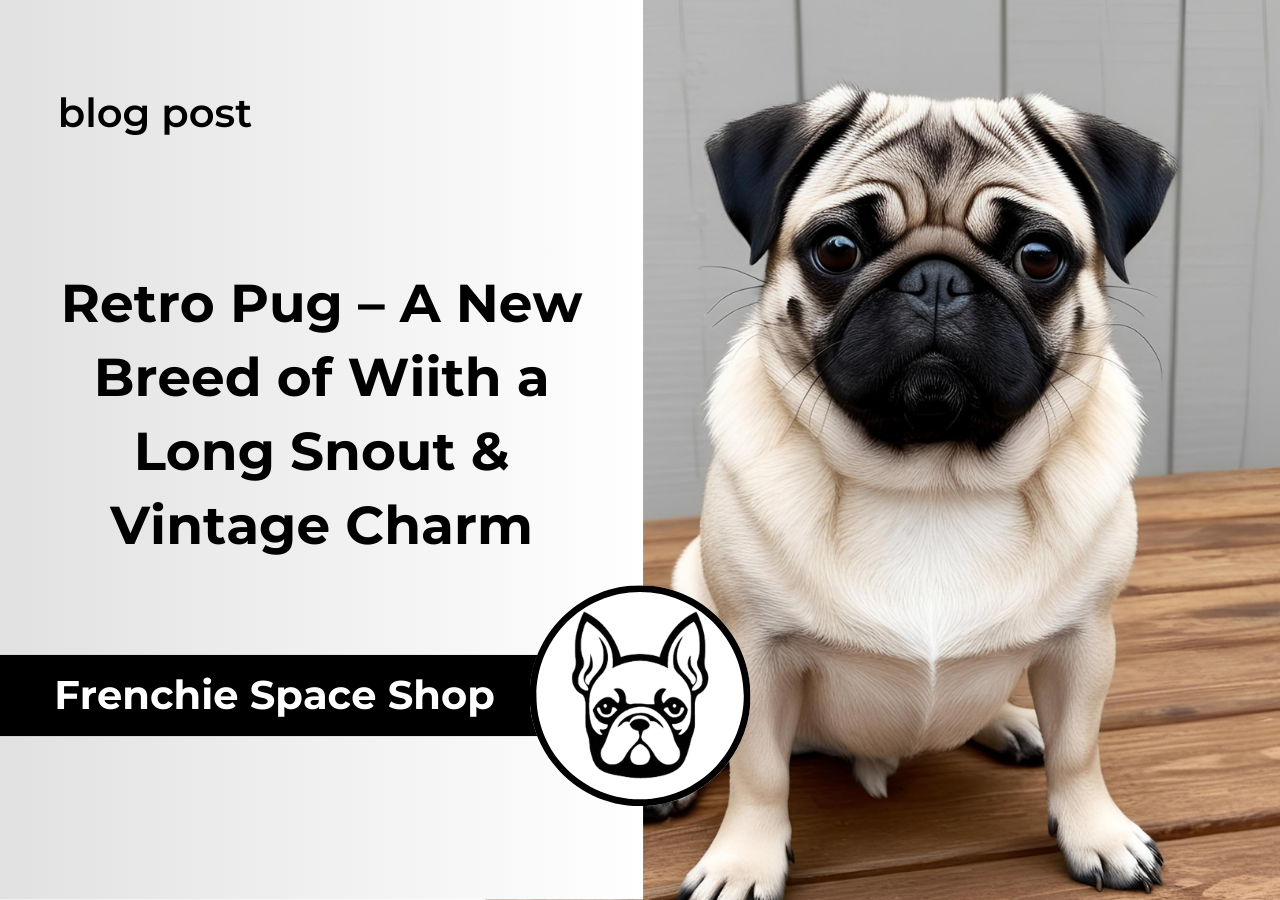
Ever heard of a retro pug? At first, the name might conjure up a vintage-themed pug in a sepia-toned photograph – perhaps a vintage pug from decades past. In reality, it’s a modern creation. This term refers to a new breed of pugs selectively bred to have a longer snout and fewer wrinkles than a typical pug.
Breeders set out to create a pug that looks a bit more “old school” (hence retro) while addressing many of the health issues seen in today’s flat-faced pugs. So, what exactly is this pug with a snout all about, and is this new pup truly healthier than a normal pug? Let’s find out as we explore the world of the retro pug.
What Is a Retro Pug?
A retro pug is essentially a cross between a purebred Pug and a Jack Russell Terrier, bred with the goal of improving the Pug’s health and anatomy. In other words, think of it as a long snout pug – essentially a pug with a long snout (the pug long snout many people wish for) – that breeders hope will be healthier overall.
The idea originated with German breeders in the 1980s, and the retro pug breed (sometimes called the Retro Mops or Old German Pug in Europe) started turning heads internationally by the mid-2000s. Despite the “retro” name, this is not an ancient throwback breed but a designer hybrid – it’s not officially recognized as a separate breed by major kennel clubs.
In Germany, enthusiasts often refer to these longer-muzzled pugs as retro mop (using the German word Mops for pug). The breeding experiment aims to keep everything people adore about pugs – their affectionate nature, compact size, and playful charm – while giving them a more pronounced nose and healthier airways.
Every puppy can turn out a bit different in appearance, since crossbreeding produces varied results. Some retro pug puppies resemble a traditional pug with a slightly longer snout, while others take after the terrier side and have a slimmer face or more athletic build.
Retro Pug vs. Traditional Pug: Key Differences in Appearance
How does a retro mop compare to a standard pug in looks? Thanks to the Jack Russell genes, there are some noticeable differences in appearance. Here are the major traits that set a retro pug apart from a regular pug:
- Longer Snout & Fewer Wrinkles: The most obvious difference is the face shape. Its nose is much longer than a normal pug’s, and it has far fewer deep wrinkles on its face. This means a retro pug can breathe more easily, avoiding many of the respiratory troubles that extremely flat-faced pugs experience.
- Size & Build: Retro pugs tend to be a bit larger and leggier. While a typical purebred pug weighs around 13–20 pounds, retro pugs usually fall in the 15–25 pound range. They often stand a couple of inches taller, with a leaner, more athletic build and longer legs reminiscent of their terrier ancestors. In other words, this “new pug breed” looks a bit more proportional and closer to what pugs may have looked like in centuries past.
- Ears: Those adorable ears get an upgrade too. Many old German pugs sport larger, floppier ears compared to the small, tight ears of a classic pug. Breeders believe that bigger ears not only give a cute, expressive look, but might even improve hearing and reduce the risk of ear infections in the dog (since there’s more airflow).
- Tail & Coat: Retro pugs’ tails tend to be less tightly curled than a standard pug’s curly tail. This is a minor visual difference, but worth noting for pug enthusiasts. Additionally, retro pugs can come in some coat colors you won’t commonly see in normal pugs. Traditional pugs are usually fawn or black, whereas retro pugs might appear in rarer shades like silver or apricot (“peach”).
What’s the Average Price of a Traditional and Retro Pug?
| USA: Traditional mops typically $1,000–$2,500 USD for a pug puppy from a reputable breeder (prices on the higher end for show-quality or rare traits).
UK: ~£800–£2,000 GBP is the average range for pug puppies. (Prices vary by region and demand – e.g. in large cities or for specific coat colors, costs can be higher. Adoption from a rescue is much cheaper, often a few hundred dollars/pounds in fees.) |
USA: Around $800–$1,500 USD for a retro pug puppy– they are less common, but their mixed-breed status can make them slightly less expensive than purebred pugs in some cases.
Europe: Typically €1,200–€1,800 for retro pug puppies. For example, in Germany (where the retro pug originated), prices of about €1,500 to €1,800 have been reported. (Note: Availability is limited, and some breeders may charge a premium for puppies with the “retro” longer-nose traits. Always ensure breeders are reputable and health-focused.) |
Are Retro Pugs Healthier Than Normal Pugs?
One of the biggest reasons people breed and seek out retro pugs is the promise of better health. So, are these long-snouted pups actually healthier than their flat-faced cousins? In many respects, yes – but there are some caveats.
Breathing and Cooling
By far the greatest health benefit of the old German pug is improved breathing. The longer muzzle means less obstructed airways, which helps them avoid the chronic respiratory issues that plague many traditional pugs. Unlike Pugs and Frenchies that are prone to breathing issues, retro pugs less likely have narrow nostrils and elongated soft palate.
Retro mops won’t get winded as easily during play and are less prone to overheating on a hot day, because they can pant more effectively to cool themselves. However, you still need to keep them cool in case you’re planning to spend a day outside in hot weather. It’s important to take with you enough water, a cooling mat and a dog cooling vest.
In our store, you can find a French bulldog cooling vest that will suit the bodies of Pugs and retro pugs too. It’s made of heat resistant fabric and should be worn wet. In only few minutes, your pooch will get a pleasant cooling effect and start to breathe normaly.
Overall Health and Lifespan
Thanks to a more normal head and body structure, retro pugs often have fewer of the skeletal and neurological issues associated with purebred pugs. In fact, they tend to live longer on average – often up to around 15 or 16 years, versus about 12–14 years for a typical pug. However, this doesn’t mean retro pugs are invincible or completely free of health problems.
Retro pugs with longer snouts are healthier than normal pugs, but they can still inherit other issues – sometimes even from the Jack Russell side. Common problems noted in these pups include allergies, hip dysplasia, and dental crowding (since even a moderately short snout can lead to tooth alignment issues). And because it’s a crossbreed, each dog is a bit of a genetic grab-bag.
Some retro pugs might still have somewhat brachycephalic (short-nosed) skulls – just not as extreme as a pure pug – so they could still snore and need care not to overheat during hard exercise. Retro mops are generally healthier than old-style pugs when it comes to breathing, but they’re not magically problem-free dogs.
Although they have double-layered coats, they need a warm layer of clothes during winter months. Since they can get a hypothermia very easily, our recommendation is to wrap them in cozy dog jackets and sweaters. They will mean a lot for their tiny bodies.
Temperament and Lifestyle: Pug vs. Retro Pug Personalities
Physical traits aren’t the only differences – there’s also a bit of a personality shift when you mix a pug with a terrier. Retro pugs tend to be more energetic and adventurous than the average pug. Traditional pugs are famously laid-back lapdogs, content to lounge and nap for a good part of the day.
Retro pugs, by contrast, inherit some of the Jack Russell’s lively spirit and often want longer play sessions (cue the zoomies around the yard)! These dogs usually love a good walk (or two) each day and plenty of playtime.
Make sure they get plenty of exercise and mental stimulation (like puzzle toys), or a bored retro pug may get into mischief by chewing or digging. An active owner or family that enjoys outdoor fun will likely be a great match for this new breed.
When it comes to behavior at home, old German pugs are still sweet-natured, affectionate, and devoted to their people – that pug DNA is strong in the temperament department. They generally get along well with families and other pets, just like classic pugs do. You might notice retro pugs are a bit more vocal, though.
Pugs aren’t big barkers; Jack Russells, on the other hand, love to yap. Retro pugs fall somewhere in between – they will bark to alert you or to get attention, but not as incessantly as a full terrier. Think of it as a moderate watchdog tendency. With proper training and socialization, they remain friendly and outgoing dogs. Just remember that retro pugs aren’t couch-potato dogs. Be ready for a playful companion that might surprise you with its agility and curiosity!
If you’re not sure what toys you need to keep your retro Pug engaged and curious, then check our collection of toys.
Pros and Cons of Owning a Retro Pug
Like any breed (or crossbreed), the retro mop comes with its own set of advantages and drawbacks. Here’s a balanced look at the ups and downs of this pug remix:
Pros of Retro Pugs:
- Healthier breathing: Thanks to their longer noses, retro pugs have far fewer breathing difficulties and less snoring than flat-faced pugs. Many owners are relieved to have a pug that can enjoy a game of fetch without gasping for air.
- Retains pug personality: Importantly, retro pugs still have that loving, clownish pug temperament. They are affectionate, human-oriented dogs. You get the best of both worlds – a pug’s charm in a somewhat more robust package.
Cons of Retro Pugs:
- Not a purebred pug: Since retro pugs are a mixed breed, they don’t have official pedigree status. For purists who adore the classic pug look, retro pugs might not satisfy that desire – their longer snouts and smoother faces make them look a bit less like the iconic pug silhouette.
- Ongoing health care: While healthier than a normal pug, retro mops are not immune to health problems. They can still have issues like allergies, joint problems, or dental needs, which may mean vet visits and expenses over their lifetimet. Breathing is improved, but you’ll still need to watch for other inherited ailments.
- Higher energy needs: Retro pugs are not as low-maintenance in the exercise department. If you prefer a dog that lounges all day, this isn’t it. Their higher energy and curiosity can lead to naughty behaviors (barking, chewing, digging) if they don’t get enough activity and attention.
Finding a Retro Pug (Breeders and Adoption)
If you’ve decided you might want to add one of these retro mops to your family, be prepared to do a bit of homework. Since this is a niche hybrid, reputable retro pug breeders aren’t as common as regular pug breeders. You may need to search in certain regions (for example, some breeders in Europe specialize in the “retro Mops”) or join online groups of enthusiasts to get breeder referrals.
When talking to any breeder of retro pugs, ask about their breeding practices and health testing. A responsible breeder will be focused on maintaining those health improvements – for instance, selecting parent dogs with good snouts and no major genetic issues. Always ensure that the puppies and parent dogs are kept in healthy conditions and not from a puppy mill situation.
Another option is adoption. Occasionally, retro pugs or similar pug mixes turn up in rescues or shelters. Adopting can be wonderful if you’re open-minded about the exact look and lineage of your dog. (In fact, many so-called “retro” pugs might just be unintentional pug mixes that happen to have a longer nose.) Whether through a breeder or a rescue, take your time and make sure your new pup is coming from a safe and ethical environment.
Read also: Rediscovering the French Bulldog Original Look: History Overview
Final Thoughts on the Retro Pug
The retro mop is an intriguing blend of old and new. In a way, it’s bringing back the pug of yesteryear. A long nose pug more like those seen in 18th-century paintings (reminiscent of the old German pugs) – but doing so via modern crossbreeding. For many dog lovers, this “upgrade” offers the best of both worlds: you get the adorable, friendly pug personality in a healthier package. Owners who have made the switch often love that their retro mops can romp and play without the constant worry that they will struggle to breathe.
That said, old German mops aren’t meant to replace the classic pug for everyone. Traditional pugs still hold a special charm with their wrinkly faces and comical snorts. Not everyone minds a couch potato pet that prefers snuggling over sprinting.
Ultimately, retro pugs simply provide an alternative for people who adore pugs but wish for a pet that can keep up with an active lifestyle and maybe save on some vet bills. It’s a fascinating development in dog breeding. One that sparks plenty of debate among pug aficionados – but it comes from a good place. It’s the desire for our beloved pugs with longer snouts to live happier, healthier lives. The old pugs vs new pugs debate will likely continue, but there’s no denying that retro pugs have snuffled their way into the canine spotlight.

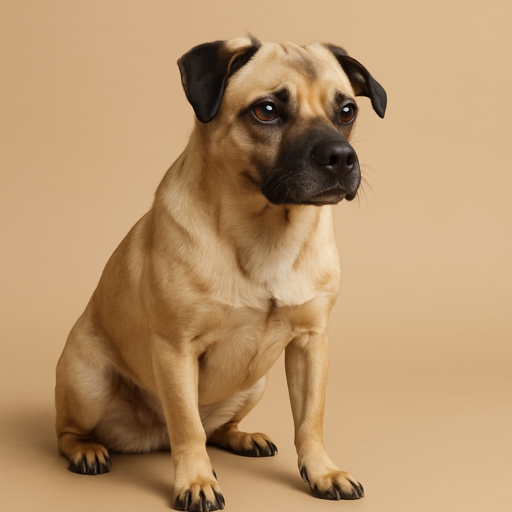
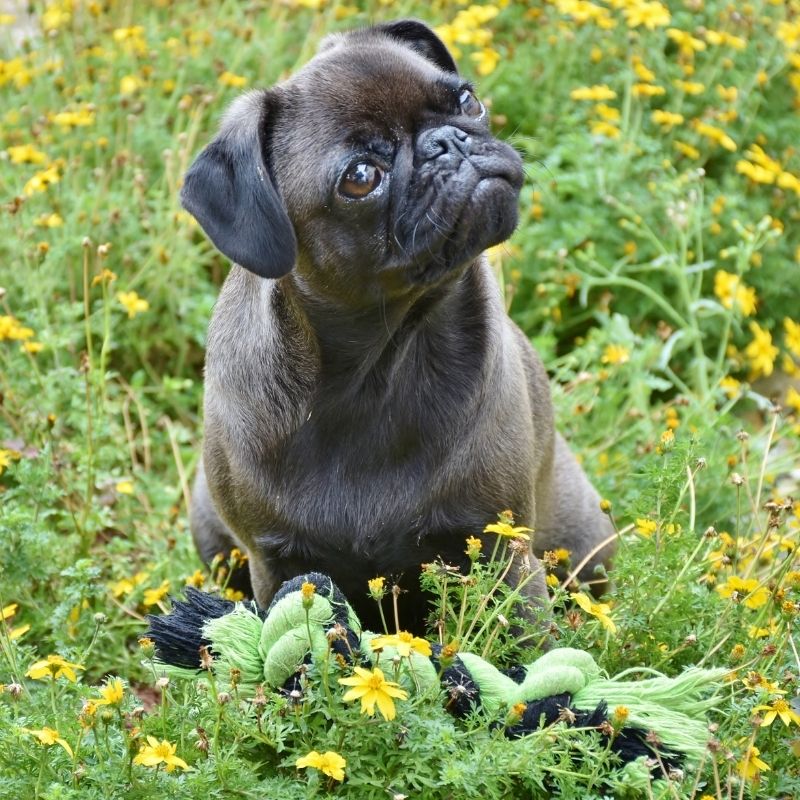

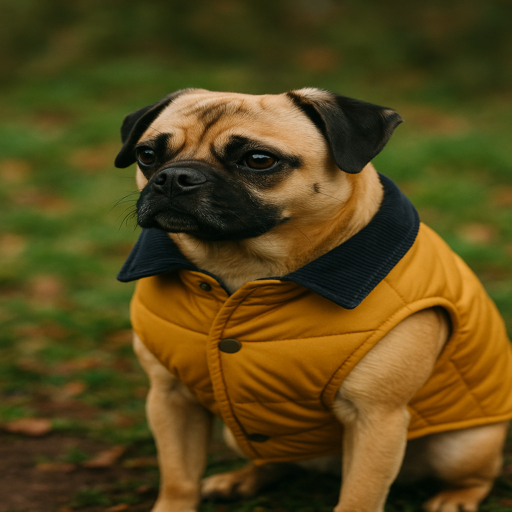
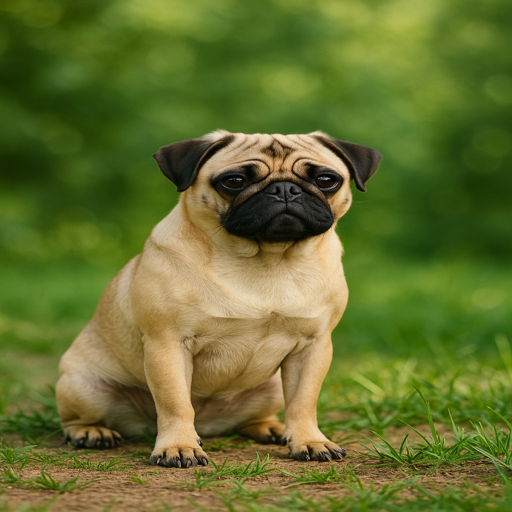


 French Bulldog Jackets & Coats
French Bulldog Jackets & Coats French Bulldog Dresses & Skirts
French Bulldog Dresses & Skirts French Bulldog Hoodies
French Bulldog Hoodies French Bulldog Sweaters
French Bulldog Sweaters French Bulldog Shirts
French Bulldog Shirts French Bulldog Pajamas
French Bulldog Pajamas French Bulldog Costumes
French Bulldog Costumes French Bulldog Life Jackets
French Bulldog Life Jackets

 French Bulldog Collars
French Bulldog Collars French Bulldog Harness
French Bulldog Harness
 French Bulldog Backpacks
French Bulldog Backpacks







